If you are looking wholesale lighting solutions, click here.
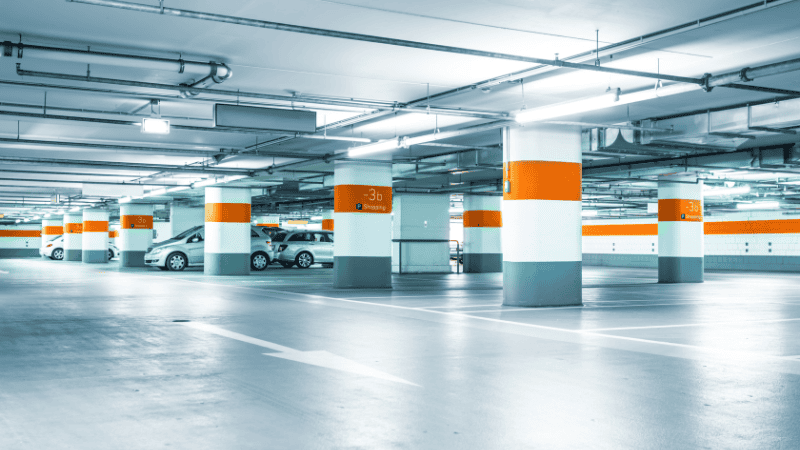
Garages are more than just places to park cars; they’re dynamic spaces used for a variety of activities, from DIY projects to storage and gatherings. Enhancing your garage’s functionality and safety significantly depends on the right lighting.
Given the plethora of choices available, deciding on a starting point can be daunting. Choosing the best lights for your garage, including the size of your space, its primary use, and your budget.
In this article, we’ll explore everything you need to know about garage lighting, the advantages of choosing the right type of lighting, and practical tips on how to choose and install the perfect lighting setup for your garage.
The type of garage light has its own unique characteristics, so let’s take a closer look at the differences between them. We’ll look at things like how bright they are, how energy efficient they are, how long they last, and how easy it is to install them.
There are no restrictions when choosing lights for your garage. Ideally, it depends on your garage environment and overall look. Here’s the breakdown of different types of LEDs that can be a perfect fit for your garage.
Overhead lighting acts as the primary source of illumination in most garages, providing general lighting for the entire space. Among the various options available, fluorescent lights, LED lights, and incandescent lights are commonly used.
LED (Light Emitting Diode) lights have completely changed the lighting business, thanks to their remarkable energy economy, durability, and versatility. These Lights use a great deal less energy than conventional lighting solutions to provide clear, brilliant illumination.
Homeowners can customize the lighting arrangement to fit their specific needs thanks to the number of shapes they come in, including overhead fixtures, strip lights, and bulbs.
With a variety of forms, they come in with a variety of forms such as overhead fixtures, strip lights, and bulbs. Additionally, LED lights are a low-maintenance and longer-lasting solution for garage lighting.
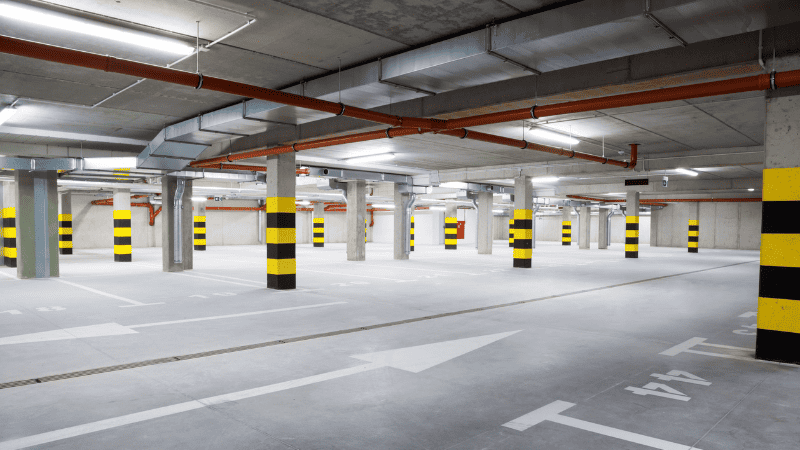
The energy efficiency and uniform brightness of fluorescent lights have made them a popular option for garage lighting for a long time.
These lights are perfect for general lighting in big garage spaces since they create a gentle, diffused light that reduces harsh shadows. There are several sizes and designs of fluorescent lighting available, such as small fluorescent bulbs and tube-style fixtures.
Fluorescent lighting is a more affordable option for garage lighting than typical incandescent lighting, despite having a somewhat higher initial cost. This is because fluorescent lights use less energy and last longer.
Even though their usage is diminishing, incandescent lights are still occasionally used in modern garage lighting applications. A filament in these lights heats up and emits light when an electric current is run through it.
Although incandescent lights are less expensive than fluorescent or LED lights and offer a cozy, welcoming glow, they are less energy-efficient and have a shorter lifespan.
They might still be appropriate, nevertheless, for homeowners on a limited budget or those who want to give their garage a nostalgic lighting design.
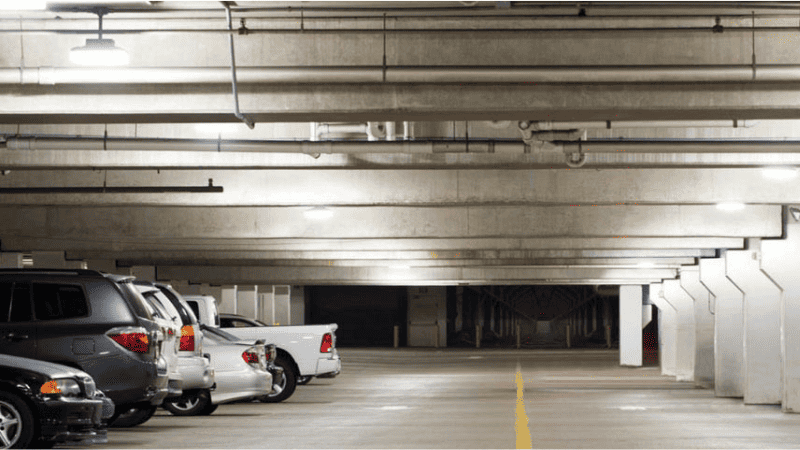
When it comes to a garage, task lighting is crucial for providing enough light for jobs like crafting, car repairs, woodworking, and other tasks requiring precise attention to detail. Adjustable task lighting fixtures enable users to precisely direct the light where it is needed.
In order to provide focused illumination for complex jobs like woodworking, vehicle repairs, or crafting, workbench lights are usually installed above or directly in the work area.
Due to their frequent adjustability, these lights help users reduce eye strain and improve sight when working for extended periods of time by precisely directing light where it is needed.
For brightening countertops and areas in the garage, under-cabinet lighting is a useful and fashionable option. These lights are positioned underneath shelves or overhead cabinets to softly illuminate the area underneath.
Whether you’re detailing cars, organizing supplies, or working on little jobs that need focused illumination, under-cabinet lights come in handy. They give homeowners choices in both design and utility and are available in a variety of forms, such as LED strip lights and puck lights.
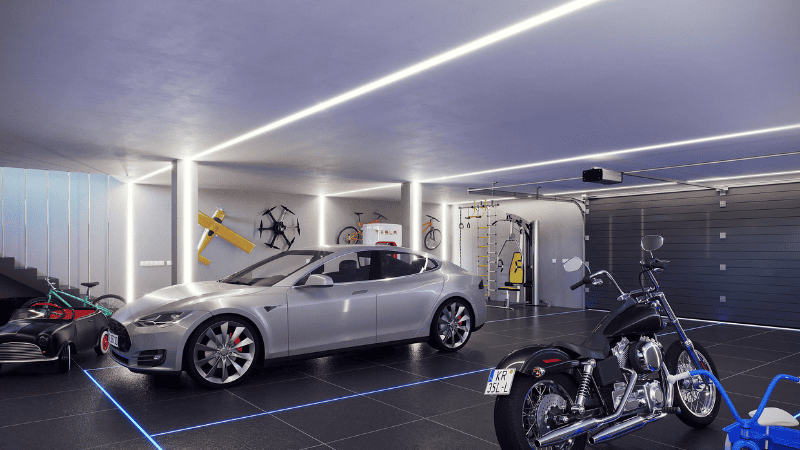
In order to offer targeted illumination for carrying out particular jobs or activities, lighting fixtures or systems are referred to as task lighting. Task lighting is designed to illuminate a specific region where detailed or specific tasks are performed, as opposed to general lighting, which illuminates a place overall.
Wall sconces add a decorative touch to the garage while providing supplemental lighting. They are available in a range of designs and styles, letting homeowners tailor the atmosphere of their garage spaces to their interests.
Track lighting provides the versatility to aim light towards various sections of the garage. It features a track affixed to the ceiling, along with flexible fixtures that can be directed to light up particular objects or areas as required.
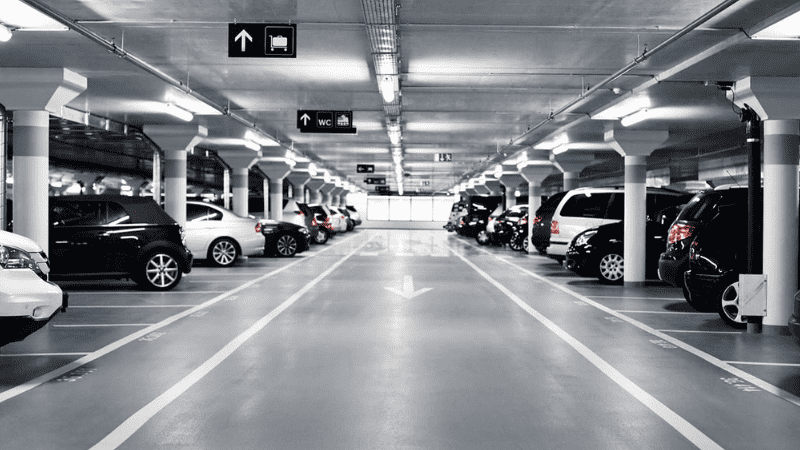
Security lights are the best way to increase the safety and security around your garage. They use a bright light to deter any unwelcome guests and improve your visibility at night.
Security lights come in a variety of styles, such as floodlights and wall-mounted fixtures, and you can set them to automatically turn on when motion is detected.
When motion is detected, motion sensor lights automatically turn on and provide immediate illumination for areas surrounding the garage. They are both energy-efficient and suitable for improving security and visibility during nighttime hours.
In order to cover the garage and surrounding areas, motion sensor lights are frequently used in conjunction with other outdoor lighting fixtures.
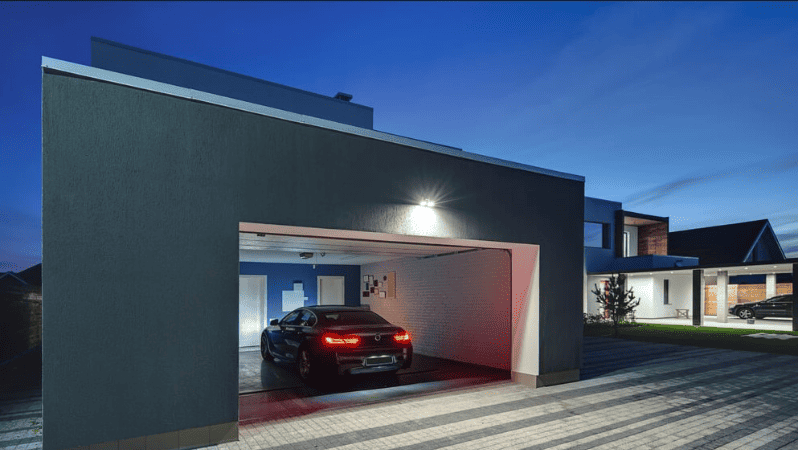
LEDs (Light Emitting Diodes) are widely considered the best option for garage lighting due to several compelling reasons:
LED lights use a lot less power than old-style bulbs like the ones that get really hot or the long tube lights. This means you can save money on your electric bill and be nicer to the planet. So, using LED lights in your garage is a smart move because they’re better for your wallet and the earth.
LED lights last a really long time. They can shine way longer than old-style bulbs and even longer than tube lights. This is great because you don’t have to change them often, which saves you both time and money over the years.
LEDs produce bright, high-quality light that is evenly distributed, making them ideal for illuminating large garage spaces effectively. They provide clear visibility and reduce glare, creating a comfortable working environment for tasks such as car repairs, woodworking, or DIY projects.
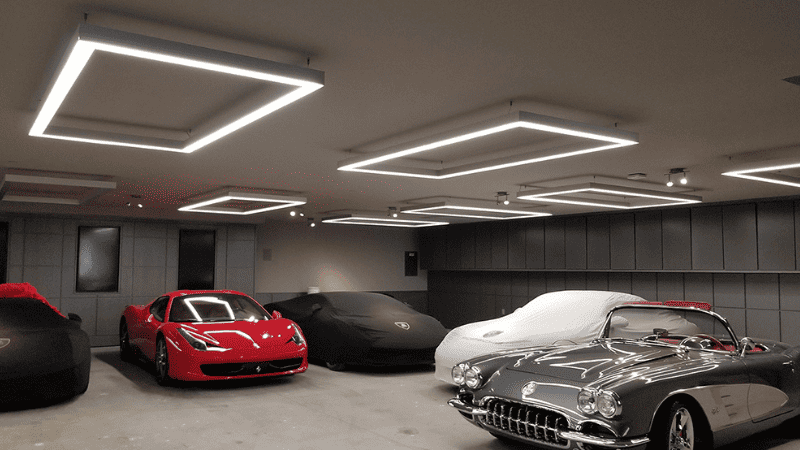
LED lights are pretty strong and can handle bumps, shakes, and changes in hot or cold weather. This makes them a great choice for lighting up a garage, where things can get pretty rough.
LEDs are designed to endure rough treatment and challenging environments, maintaining their performance unlike the more fragile incandescent bulbs or delicate fluorescent tubes.
LEDs turn on instantly with full brightness, eliminating the need for warm-up time or flickering commonly associated with fluorescent lights. This instant-on feature is particularly convenient in a garage setting where immediate illumination may be needed for safety or security reasons.
LEDs are available in diverse forms, dimensions, and color temperatures, enabling homeowners to tailor their garage lighting to suit their tastes and particular requirements. Whether it’s overhead fixtures, strip lights, or task lighting, LEDs offer versatility in design and functionality.
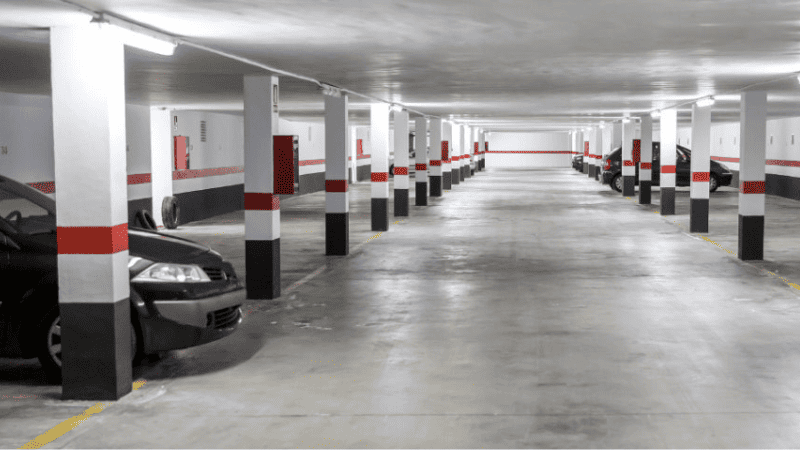
Illuminating your garage with top-notch lighting solutions not only enhances visibility but also significantly improves safety, functionality, and the overall aesthetics of the space.
Whether it’s for carrying out precision tasks, parking your vehicle, or transforming your garage into a versatile workspace, the right lighting setup can make all the difference.
Safety should always be a top priority, especially in spaces where tools, equipment, and vehicles are present. Appropriate lighting reduces accident risks by ensuring clear visibility.
With well-lit surroundings, you can easily spot potential hazards such as sharp objects, slippery floors, or obstacles in your path. This reduces the likelihood of tripping, falling, or injuring yourself while working in the garage.
Effective lighting can significantly enhance your workflow and overall environment in the garage. Bright, consistent lighting eliminates shadows and dark corners, making it easier to locate tools, find storage items, and perform tasks with precision.
Whether you’re working on DIY projects, performing vehicle maintenance, or organizing clutter, good lighting ensures that you can do so efficiently and comfortably.
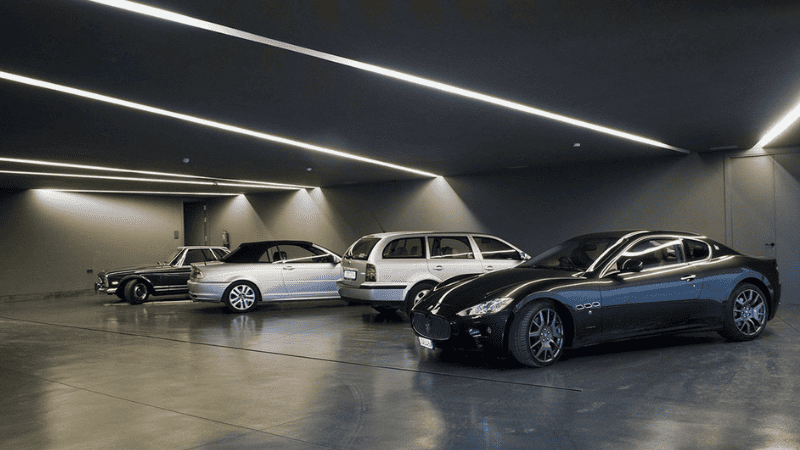
In a well-lit garage, you’ll find yourself feeling more motivated and productive. Proper illumination promotes alertness and concentration, allowing you to focus better on the task at hand.
Whether you’re tinkering with machinery, woodworking, or engaging in hobbies, adequate lighting creates an atmosphere conducive to productivity. Additionally, by reducing eye strain and fatigue, superior garage lighting enables you to work for longer periods without discomfort.
Putting good lights in your garage can make your place safer. When the outside of your house is bright, it keeps away people who might try to sneak in, because they like places where it’s dark and they can hide.
By illuminating your garage and its surroundings, you create a less appealing target for burglars and vandals. Motion-activated lights further bolster security by alerting you to any suspicious activity outside your home.
Modern garage lighting solutions offer energy-efficient options that not only benefit the environment but also save you money in the long run.
LED bulbs use less power than old-style bulbs but still give off ample light and last longer. If you switch to LED lights, you’ll use less energy and save money on your energy bills, all while keeping your space bright.
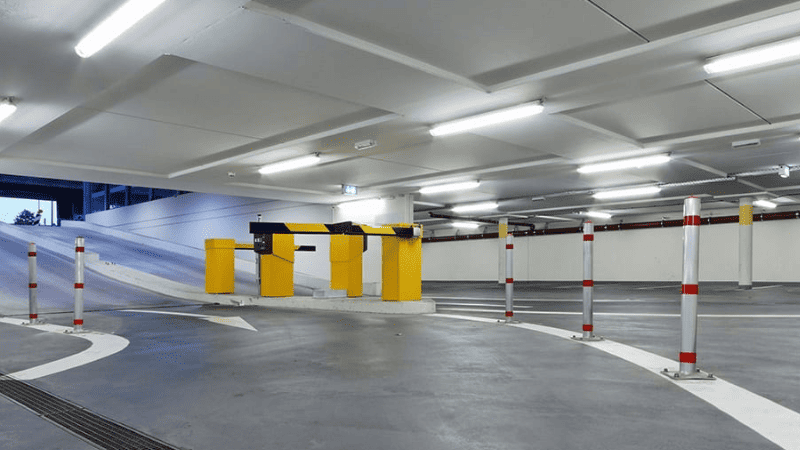
When choosing garage lighting, there are several factors to consider to ensure you select the best option for your needs:
If your garage is not climate-controlled and experiences extreme temperatures or humidity, you’ll need lighting fixtures that are durable and can withstand such conditions without malfunctioning. Look for fixtures with a suitable IP rating to ensure they can handle the environmental challenges effectively.
The brightness required varies based on your garage’s size and its intended use. For example, if you’re using your garage as a workshop, you may need brighter lights compared to someone who just parks their car there.
The ambiance and functionality of your garage can be influenced by the color temperature of the lighting. Warmer color temperatures (around 2700K to 3500K) create a more relaxed atmosphere, while cooler color temperatures (around 4000K to 5000K) are brighter and more suitable for task-oriented activities.
Choose lights that save energy, like LED bulbs or lights, to cut down on how much electricity you use and save money on your bills as time goes by. LED lights last longer than the old-style bulbs we used before.
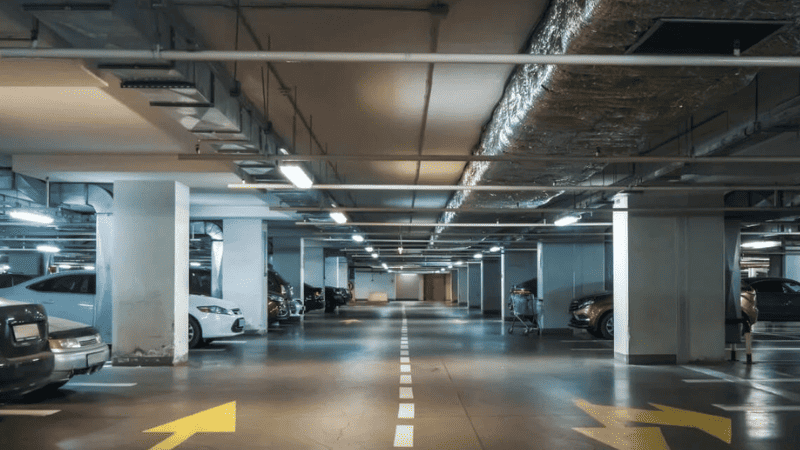
Choose between overhead fixtures, wall-mounted fixtures, or portable work lights based on your garage layout and lighting needs. Overhead fixtures provide general illumination, while wall-mounted fixtures can offer targeted lighting in specific areas. Portable work lights offer flexibility and can be moved around as needed.
Consider how easy or difficult it will be to install the lights. Certain fixtures might necessitate installation by a professional, whereas others are simple enough for DIY tasks.
The right lighting can significantly impact the usability and ambiance of your garage, whether it’s used as a workshop, storage area, or a place for your vehicle.
We will provide you with the insights and tips needed to make an informed decision, ensuring that you select the best lighting to meet your garage’s unique needs.
Determine how you primarily use your garage. Is it primarily a storage space, a workshop for DIY projects, a gym, or a place to park vehicles? Understanding the primary activities will help you choose lighting that provides adequate illumination for those tasks.
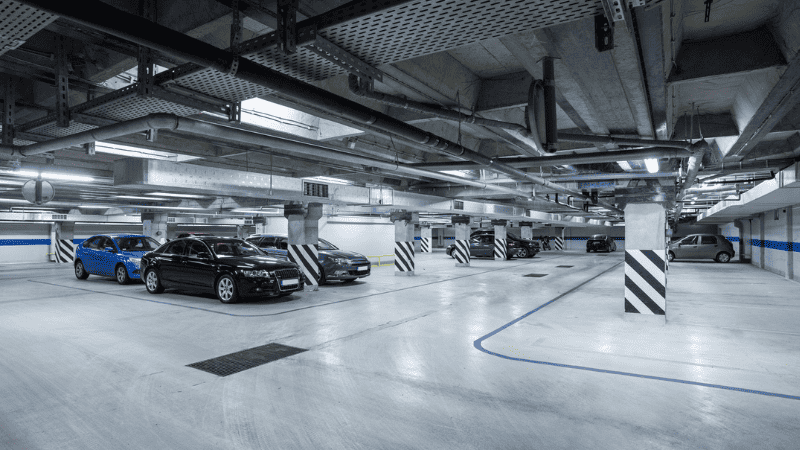
Choosing the right lighting for your garage is crucial to creating a functional and well-lit space. Let’s explore various options and considerations to ensure you pick the most suitable types of lighting for your garage needs.
Overhead lighting fixtures, such as fluorescent tube lights or LED panel lights, provide general illumination for the entire garage space. They are ideal for ensuring visibility throughout the area.
Task lighting, such as adjustable LED work lights or under-cabinet lights, focuses on specific areas where detailed work or activities occur, such as workbenches, tool areas, or car maintenance zones. This type of lighting helps improve visibility for detailed tasks.
Consider installing motion-activated lights or smart lighting systems with motion sensors. These lights automatically turn on when motion is detected, providing convenience and security, especially when entering the garage at night.
Whenever possible, try to let in more sunlight by putting in extra windows, skylights, or garage doors with glass panels. Sunlight can help cut down on the use of electric lights during the day and make your garage feel warmer and more welcoming.
When picking light bulbs for your garage lights, think about how bright they are (that’s called lumens), the color of the light (like warm white, cool white, or daylight), how much energy they save (like LED, fluorescent, or old-style bulbs), and how long they last.
Most people like LED bulbs best because they save a lot of energy, last a long time, and you can use them in many different ways.
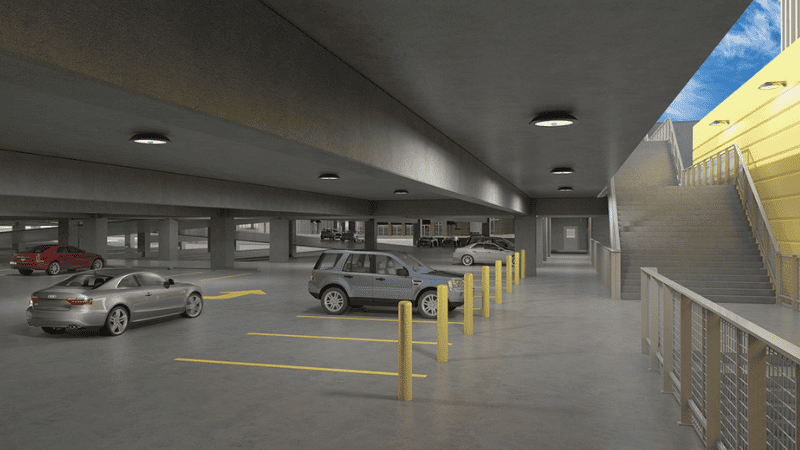
Install lighting fixtures strategically to ensure even illumination across the entire garage space. Place overhead fixtures in central locations for general lighting and supplement with task lighting in specific work areas as needed.
Keep lights at a distance from walls and corners to prevent shadows and ensure even lighting distribution.
Incorporate lighting controls such as dimmer switches, timers, or smart lighting systems to customize the brightness and ambiance of your garage lighting. This enables you to modify the brightness levels based on the time of day, particular activities, or individual tastes.
Research reputable suppliers or retailers that offer a wide selection of high-quality garage lighting fixtures and accessories.
Look for suppliers that offer competitive pricing, warranty coverage, and excellent customer service to ensure a satisfactory purchasing experience.
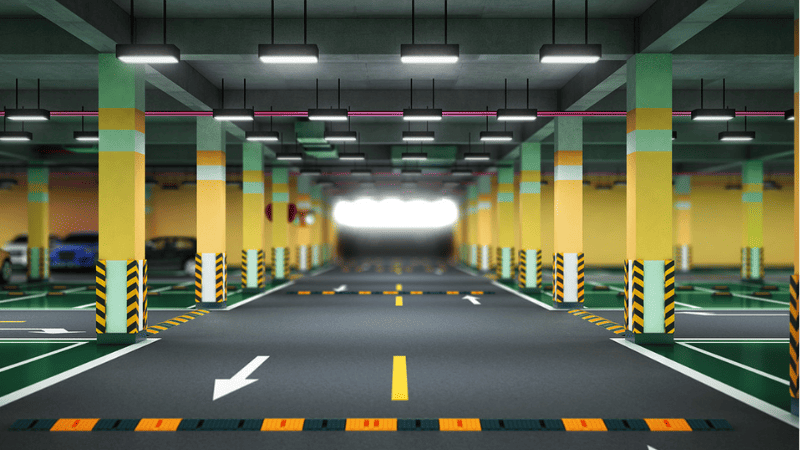
To transform the garage into a more practical and livable space, adequate lighting is paramount. This section will delve into valuable tips for installing garage lighting, aiding you in crafting a bright, comfortable workspace and storage area.
Before diving into installing new lighting fixtures, it’s essential to assess your garage’s electrical requirements.
Determine if your garage has sufficient electrical wiring to support additional lighting fixtures. If needed, seek advice from a qualified electrician to enhance the electrical wiring.
Calculate the total wattage needed based on the size of your garage and intended use. This will guide you in selecting appropriate fixtures and bulbs.
Choosing the right lighting fixtures and materials is crucial for a successful installation.
Select fixtures that are suitable for garage environments, such as LED shop lights or overhead fixtures. Consider factors like durability and energy efficiency.
Opt for energy-efficient bulbs or lamps that provide sufficient brightness without consuming excessive power. LED bulbs are favored for garage lighting because of their durability and energy efficiency.
Gather necessary wiring supplies, including cables, connectors, and junction boxes. Ensure that all components meet safety standards and are compatible with your chosen fixtures.
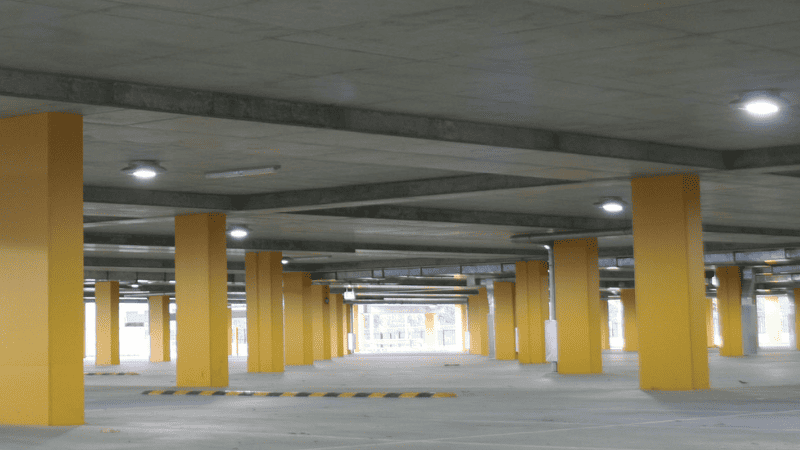
Once you have gathered the necessary tools and materials, follow these steps to install garage lighting effectively.
Turning Off Power: Before beginning any installation work, turn off the power supply to the garage to prevent electrical accidents.
Mounting Fixtures: Securely mount lighting fixtures to the ceiling or walls using appropriate hardware. Follow manufacturer instructions for proper installation.
Wiring Connections: Carefully connect wiring from the fixtures to the electrical supply, ensuring proper insulation and securing connections with wire nuts or connectors.
Testing and Adjusting: After completing the installation, it’s essential to test the lighting setup and make any necessary adjustments.
Verifying Connections: Double-check all wiring connections to ensure they are secure and properly insulated. Test each fixture to verify functionality.
Adjusting Placement if Necessary: If you notice any areas of inadequate lighting or excessive glare, consider adjusting the position of fixtures to achieve optimal illumination.
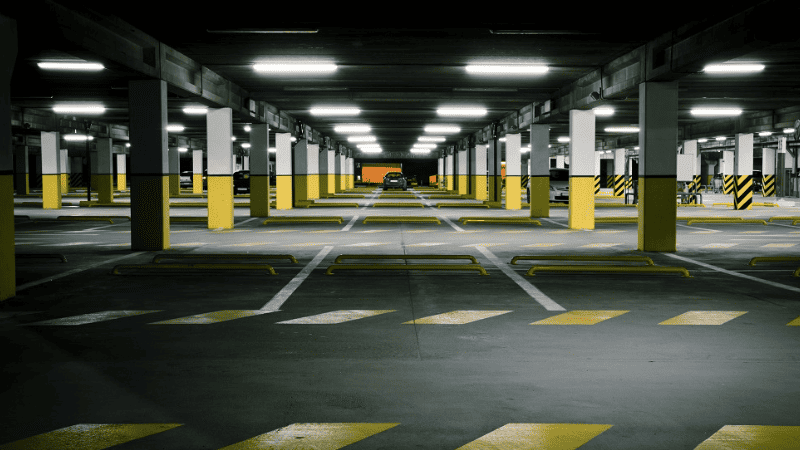
The choice of bright white and sunlight hours depends on private preference and the way they intend to use the storage.
Bright white (4000K-5000K) offers gentle, clear light suitable for workspaces, the same time as daylight hours (5000K-6500K) mimics natural daylight and may enhance visibility and alertness there is a superb
LED bulbs are in large part considered the best choice for storage lights due to their electricity efficiency, durability, and remarkable overall performance. Look for LED bulbs with the proper amount of mild and color temperature to suit your specific requirements.
While leaving storage lights on overnight can increase protection and discourage intruders, it can also lead to unnecessary energy consumption and increased utility costs.
You can consider using motion sensor lights or programmable timers to achieve a balance between security and energy efficiency.
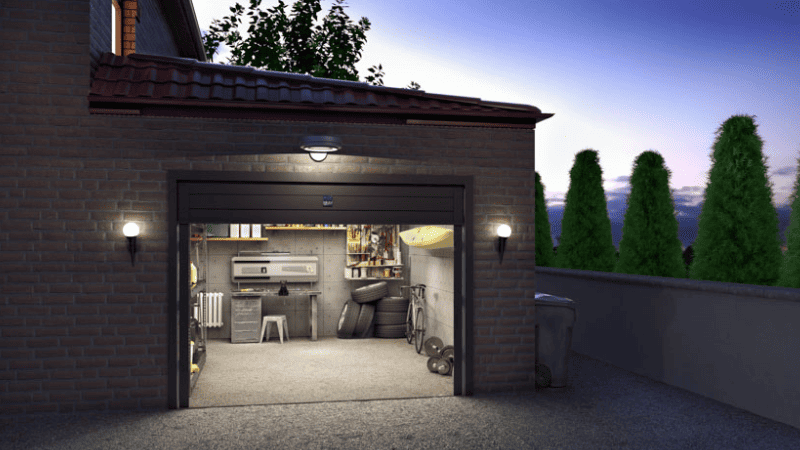
Yes, LED bulbs commonly provide brighter and more consistent light when compared to fluorescent bulbs. In addition, LED bulbs have an extended life and power performance, making them ideal for storage lighting fixtures.
The satisfactory brilliant color for the storage depends on its supposed use and private choice. Cooler shades (5000K-6500K) are best perfect for working areas, while hotter temperatures (3000K-4000K) are more inviting for enjoyable or enjoyable areas
Having proper lighting in your garage is essential for safety, functionality, and aesthetics. Whether you choose flush mount or strip lighting, there are plenty of options available to suit your needs and budget.
Consider factors like luminosity, power conservation, and longevity when selecting the ideal garage lighting for your area. With appropriate lighting, your garage can be converted into a brightly lit area.
Turn your dream garage into reality by consulting the top LED Lighting Solution Company (Risun).
With a comprehensive LED lighting solution, Risun helps you find the best match solutions that align with your indoor and outdoor needs and requirements. Contact here today.
Comprehensive Lighting Solutions for MRO Wholesalers and Professionals
send your inquiry
Hi, I'm the author of this post, and I have been in this field for more than 15 years. If you want to wholesale lighting fixtures or lighting related product, feel free to ask me any questions.
Learn More >>Download our catalog to view all of our lighting products.
Ready to get started ?
Send Your InquiryOur team will get back to you promptly

please
download
Get notified about new products
Our team will get back to you promptly!
Add your first comment to this post